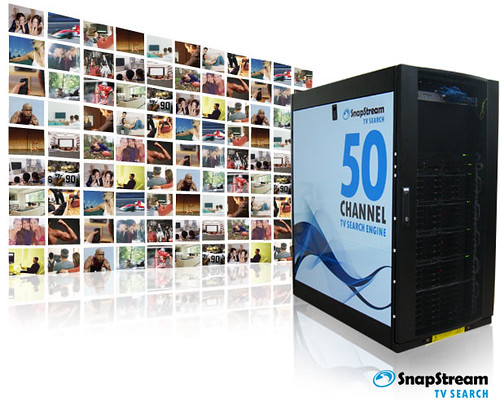There are a lot of reasons behind the continuing decline of the big media outlets in the U.S.
You can point to structural issues in the evolving news marketplace - the explosion of competition and substitutes that has splintered audiences; the rise of a superior medium for classified advertising (online); the shrinking news cycle and the shift in focus from accuracy to primacy (that is, being the first with a story has become more important than being accurate).
You can point to shifting audience preferences - newspaper readership has been declining with each new generation of readers; the rise of TV news, then cable for immediacy and impact; the rise of online news and alternative information sources that allowed news consumers to find the news and framing that suited their preferences, (challenging and dismantling the gatekeeping role of major news outlets and directly challenging its orthodoxy and calling it to task for its errors).
You can point to a plethora of bad management decisions on the part of once-dominant monopolistic media firms - such as selecting a morning show host with limited experience to anchor a major TV news program; of emphasizing entertainment values over news values (emphasis on the "gotcha" moment, promoting controversy and opinionated contrived conflict over reasonable discussion, hiring for name recognition outside of journalism - or directly from political staffs. etc.), reducing the size of staffs actually producing the product (news) while enlarging management and trying to maintain monopolistic profit levels. And one glaring recent example - the
New York Times hiring as its CEO someone whose media experience is with a European public service broadcaster (the BBC) and offering him a package that could amount to $8+ million in salary and benefits for his first 16 months on the job - when the business he will be CEO of is on track to lose more than $600 million in 2012.
And you can point to changes in the journalistic process - with shrinking staffs and emerging alternative media forms pushing reporters to cover more, with multiple media, and produce multiple versions of stories; with the emphasis on primacy rushing story production; with the near-disappearance of mid-level copy editors and fact-checkers from newsroom staffs; and with a decline in beat reporting that has contributed to the emergence of a cohort of generalist reporters who often lack the background knowledge and experience to inform their coverage and challenge inaccuracies when they confront them.
To us old guys, the "profession" of journalism seems to be less investigative and analytical than "reporting" - and in a bad sense. Too much of modern journalism seems to consist of taking information fed to them from one source, finding one or more other sources to fill out the story's frame, and regurgitating it while adding their own opinions. And it seems increasingly biased.
Now, "bias" claims can be controversial, particularly for a profession that has historically embraced standards of accuracy and objectivity. But any process of selection, including news gatekeeping, embodies bias of one form or another. News frames and formats, standards and norms - all embody some degree of bias. Some kinds of bias are good and welcome - such as standards of accuracy, or news values that suggest major corruption in local government is a more important story for local news outlets than a report of a car accident halfway around the world. But as major news outlets increasingly seek and embrace entertainment values as ways to differentiate their content and remain competitive, and as opinion becomes more widely integrated into mainstream news, major news media damage their value as "news" outlets, and are increasingly seen as less accurate, and less trustworthy. It's no wonder that trust in news outlets continues to fall.
Bias doesn't have to be limited to full-blown cheerleading for one side or another - it can happen in the selection of what news to cover, it is evident in what claims are accepted and which are rejected or treated with suspicion, and it can be seen in terms of what sources a reporter goes to, or in whether a reporter honestly seeks sources or information that challenge positions and critically evaluates the positions, or just looks for one source to "confirm" them.
But the most problematic aspect is that people tend to judge bias not on some objective standard, but relative to their own views - and if those views are widely shared among their peers it is an easy jump to the conclusion that it must be right and reasonable.
The shift to opinion, the increased perception of bias (even dishonesty) of major news media in the U.S. has become increasingly obvious over the last decade - particularly in national political coverage. And the rise of blogging has contributed to the lack of trust - by allowing true experts the outlet to publicly comment on, and challenge if needed, stories written by generalists lacking critical background knowledge and the experience to recognize problematic aspects of stories. And there has also been an increase in self-criticism and recognition of failings by journalists (or at least, those "mea culpas" are more widely reported within the blogosphere).
For example, within the last week we have Jake Tapper of ABC criticizing recent coverage -
"We are spending a lot of time in the last few weeks, those of us in the
political world, political journalists and also politicians, talking
about things other than the economy... [A] lot of people
are hurting out there. I’d like to see more action taken and more
emphasis given to this issue.”
Mark Halperin, senior political analyst for
Time, put it more succinctly when discussing the Romney tax return "story":
"I think the press still likes this story a lot, the media is very
susceptible to doing what the Obama campaign wants, which is to focus on
this,..
“Do voters care about it? I don’t think so,” he added, concluding that
“The economy is still top, front, and center. The Medicare debate’s
important. I think [Romney's tax returns is] mostly something that the press and insiders
care about. It’s an important issue about transparency, but there are
other bigger issues in the campaign, I think.”
And the concern goes back to the 2008 Presidential campaign, which saw the rise of "JournoList" an online listserve that pushed certain storylines with a strong liberal perspective. A study by the Pew Reseach Center at the time found a strong slant - then Senator Obama received much more coverage than other candidates, and coverage of Obama had 1.4 positive stories for each negative whereas coverage of McCain had 3.5 negative stories for each positive.
"Sometimes I saw with story selection, magazine covers, photos picked,
[the] campaign narrative, that it wasn’t always the fairest coverage.,, I have said before… [that I] thought the media helped tip the scales. I
didn’t think the coverage in 2008 was especially fair to either Hilary
Clinton or John McCain," Tapper said.
After the 2008 election, the Washington Post's ombudsman admitted that he felt that the
Post's coverage was slanted, and probably worth 10-15% shift in voting to Democrats. It was a perception shared by voters - one post-election poll found that
"a majority of voters (51%) say most reporters have tried to help Barack
Obama win the presidency. Just seven percent (7%) think they tried to
help John McCain.”
And it's the perception of voters and news consumers that matters - as it forms the basis for determining how much trust people place in media, and their evaluation of the value of the news being presented.
Sources -
Tapper: Media Failing Country,
The Weekly Standard
Mark Halperin: The Media Is Very Susceptible to Doing What the Obama Campaign Wants,
Mediaite
Media Bias in the 2008 U.S. Presidential Election and the Effect of the Blogosphere,
Red State

















